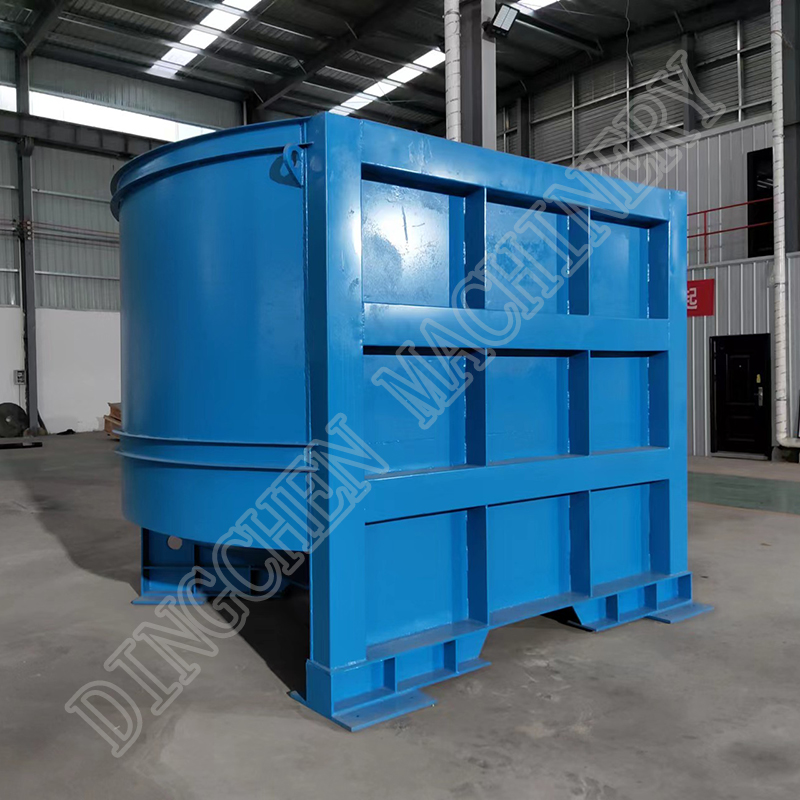In the waste paper recycling process of the papermaking industry, the hydrapulper is undoubtedly the core equipment. It undertakes the key task of breaking waste paper, pulp boards and other raw materials into pulp, laying the foundation for subsequent papermaking processes.
1. Classification and Structural Composition
(1) Classification by Concentration
- Low-consistency hydrapulper: The working consistency is generally low, and its structure is mainly composed of components such as rotors, troughs, bottom knives, and screen plates. There are types of rotors such as standard Voith rotors and energy-saving Voith rotors. The energy-saving type can save 20% to 30% energy compared with the standard type, and the blade design is more conducive to pulp circulation. The trough is mostly cylindrical, and some use innovative D-shaped troughs. The D-shaped trough makes the pulp flow turbulent, the pulping consistency can reach 4% to 6%, the production capacity is more than 30% higher than that of the circular trough type, and it has a small floor area, low power and investment costs. The bottom knife is mostly detachable, made of high-strength steel, and the blade edge is lined with wear-resistant materials such as NiCr steel. The diameter of the screen holes of the screen plate is small, generally 10-14mm. If it is used for breaking commercial pulp boards, the screen holes are smaller, ranging from 8-12mm, which plays a role in initially separating large-sized impurities.
- High-consistency hydrapulper: The working consistency is 10% – 15% or even higher. For example, the high-consistency rotor can make the pulp breaking consistency as high as 18%. There are turbine rotors, high-consistency rotors, etc. The turbine rotor can reach a pulp breaking consistency of 10%. The high-consistency rotor increases the contact area with the pulp and realizes breaking by using the shearing action between fibers. The trough structure is similar to that of the low-consistency one, and the D-shaped trough is also gradually adopted, and the working mode is mostly intermittent. The diameter of the screen holes of the screen plate is larger, generally 12-18mm, and the open area is 1.8-2 times that of the good pulp outlet section.
(2) Classification by Structure and Working Mode
- According to the structure, it can be divided into horizontal and vertical types; according to the working mode, it can be divided into continuous and intermittent types. The vertical continuous hydrapulper can continuously remove impurities, with high equipment utilization, large production capacity and low investment; the vertical intermittent hydrapulper has stable breaking degree, but has high unit energy consumption and its production capacity is affected by non-breaking time; the horizontal hydrapulper has less contact with heavy impurities and less wear, but its working capacity is generally small.
2. Working Principle and Function
The hydrapulper drives the pulp to generate strong turbulence and mechanical shearing force through the high-speed rotation of the rotor, so that raw materials such as waste paper are torn and dispersed into pulp. At the same time, with the help of components such as screen plates and 绞绳 devices (rope reels), the initial separation of pulp and impurities is realized, creating conditions for subsequent purification and screening processes. The low-consistency pulper focuses more on mechanical breaking and initial impurity removal, while the high-consistency pulper completes breaking efficiently under high consistency through strong hydraulic agitation and friction between fibers. It is especially suitable for production lines that require deinking, which can make the ink easier to separate from the fibers, and has a better removal effect on hot-melt substances than ordinary low-consistency pulpers.
3. Application and Significance
Hydrapulpers are widely used in waste paper pulping production lines and are key equipment for realizing waste paper resource utilization. Their efficient operation can not only improve the utilization rate of waste paper, reduce the cost of papermaking raw materials, but also reduce the dependence on raw wood, which is in line with the development trend of energy conservation and environmental protection. Different types of hydrapulpers can be flexibly selected according to production needs. For example, vertical continuous type can be selected for processing waste paper with a large amount of impurities, and high-consistency type can be selected for requiring high breaking consistency and deinking effect, so as to play the best performance in different production scenarios and promote the sustainable development of the papermaking industry.
Post time: Sep-17-2025


